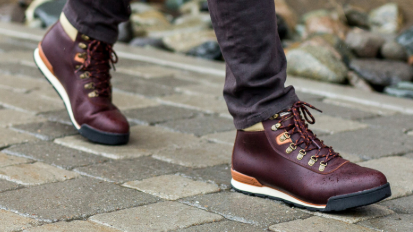
Aching feet can take the fun out of any outdoor activity. Regardless of whether you are taking on a long-distance hike or just planning on spending a couple of days in solitude. There are a couple of things you can do in advance to prevent blisters and pain and enjoy moments of outdoor fun without being haunted by constant pain. Your feet are your most vital means of transportation; hence, it is always a great idea to take proper care of them.
Wear Shoes Which Fit Properly
This sounds so simple, yet it is often the guideline ignored when especially first-time hikers go out to purchase their footwear for their adventure. A proper boot should fit tight around your heel yet leave enough space for your toes to be able to wriggle around. When spending lots of miles on your feet, they do swell up a bit, and it is never a wise decision to buy a shoe which fit snug while still in the shop. You need to go at least one size bigger. Shoes which are too tight after walking a distance causes blisters and lost toenails. Another must-do trick is to make sure that you have spent at least some range in them before starting. New shoes need to be walked in to avoid later pain and discomfort.
Lacing Up is Vital
When you are sure that you have found the perfect size and fit, then the second vital step is to lace your boots up correctly. If this isn’t done, you have wasted your time and money on finding the perfect shoe. When lacing up correctly, your boot will sit comfortably while supporting your foot without cutting off the blood flow. There are many ways of doing this, and it would be helpful to research the different techniques to find the one best suited to you.
Toenail Care
This isn’t the time to skip on cutting your toenails. Long toenails or incorrectly cut toenails will end up in pain, and you will probably lose the nail. A straight cut of the nail is best. Don’t cut into the corners. Straight cuts reduce friction between the pin and the skin and minimize infection and ingrown nails. Don’t forget to file your nails after clipping them. This also assists in reducing friction.
Prevention is Better than Cure
Don’t wait until it is too late to apply plasters. If you already know which part of your feet is most prone to blisters, then start with already using some tape or plaster to that area to minimize friction on your skin. Some hikers prefer powders or creams to reduce it. Try a couple of ways and find out which works best for you.
Socks for Comfort
Wear a thin inner sock and then a thicker outer sock. This reduces friction as well, and the inner hose directs moisture away from your foot to the outer sock. Wear socks inside out to prevent the seams of the socks from eating away into your toes.

